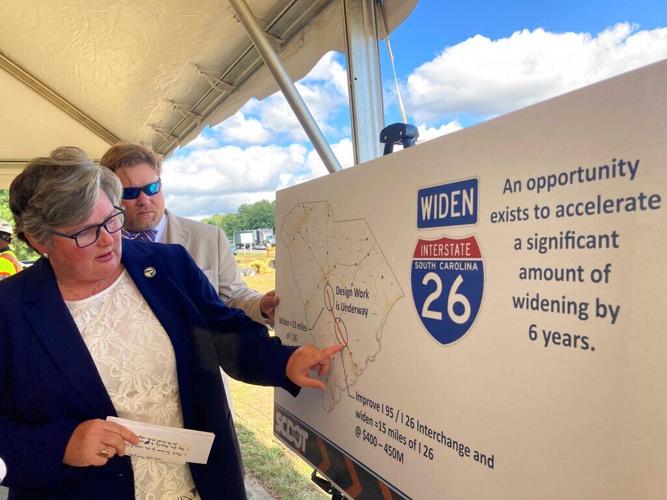COLUMBIA — The S.C. highway department is using roughly $600 million approved by legislators to speed up the widening of rural stretches of interstates 26 and 95 that are critical to South Carolina's economy.
Drivers who travel between Charleston and Columbia will be the biggest beneficiaries with the entire corridor widened to three lanes — each way — six years ahead of schedule.
Traffic frequently slows to a crawl, even without a wreck, along the 70 miles where the interstate remains four lanes total from Gaston in Lexington County to the Jedburg exit in Berkeley County.

SPEEDING UP INTERSTATE WIDENING: The state Department of Transportation is using $600 million approved by the Legislature to accelerate the widening of interstates 26 and 95. A 70-mile segment of I-26 will be widened to three lanes each way six years ahead of schedule, providing six total lanes for the entire Charleston-to-Columbia corridor by 2034. The first 33 miles of I-95 from the state's border will be widened by 2030, a couple of years early. (SOURCE: ESRI)
"Every day, we have a problem on 26," state Department of Transportation Secretary Christy Hall told The Post and Courier.
Under an accelerated timeline approved June 21 by a legislative oversight panel, the I-26 widening will be finished by 2034, while the first 33 miles of Interstate 95 coming into South Carolina should be six total lanes by 2030, at least two years sooner than previously expected.
The money is a combination of $453.5 million in federal COVID aid the Legislature designated to roadwork in a law signed by Gov. Henry McMaster last month, plus $133.6 million legislators allotted to rural interstates in the state budget that takes effect July 1.
McMaster is expected to issue his line-item vetoes of the Legislature's nearly $14 billion spending package for 2022-23 later this week. Highway funding won't be among them.
Sen. Nikki Setzler, D-West Columbia, thanked Hall's team for their planning.
"We are making a difference in infrastructure in South Carolina," said Setzler, a member of the joint House-Senate panel approving DOT's use of the federal aid. "Ten years from now, you’re not going to recognize the infrastructure in this state with the improvements being made."
It is possible I-26 widening could be finished even faster if the DOT can win a federal grant for the project. The $1 trillion spending package Congress passed in November for infrastructure set some money aside that states can win for specific projects through an application process. DOT officials said they will seek as much of that as they can.
Under the accelerated plan, widening on the final 20-mile segment of I-26, all in Orangeburg County, will begin in 2029, instead of 2035.
Rep. Gilda Cobb-Hunter, D-Orangeburg, said that still leaves people traveling in and through her county in a bottleneck for too long.
"We’re still in that doughnut hole in Orangeburg County," she said, adding the stretch of I-26 is essentially a "parking lot" depending on the time of day.

The I-26 to I-20 interchange heading northbound out of Columbia. File/John A. Carlos II/Special to The Post and Courier
She encouraged DOT to put more federal money toward unclogging traffic that's moving to and from the Lowcountry on a route vital for both the state's tourism and the shipping industry at the ports.
"I’m just trying to figure out how much longer those of us in the middle will have to suffer with that horrendous traffic on I-26," said Cobb-Hunter, who is also a member of the Joint Bond Review Committee.
In all, the Legislature put about $1 billion additional toward roadwork when combining the state budget and the separate law spending federal aid. The 2022-23 budget includes $250 million in one-time money sent to counties for local roadwork and $120 million additional the DOT will get yearly going forward. That is money the DOT needs to apply for federal grants and to draw down the additional $250 million annually the federal law provides in direct federal aid through 2026.













